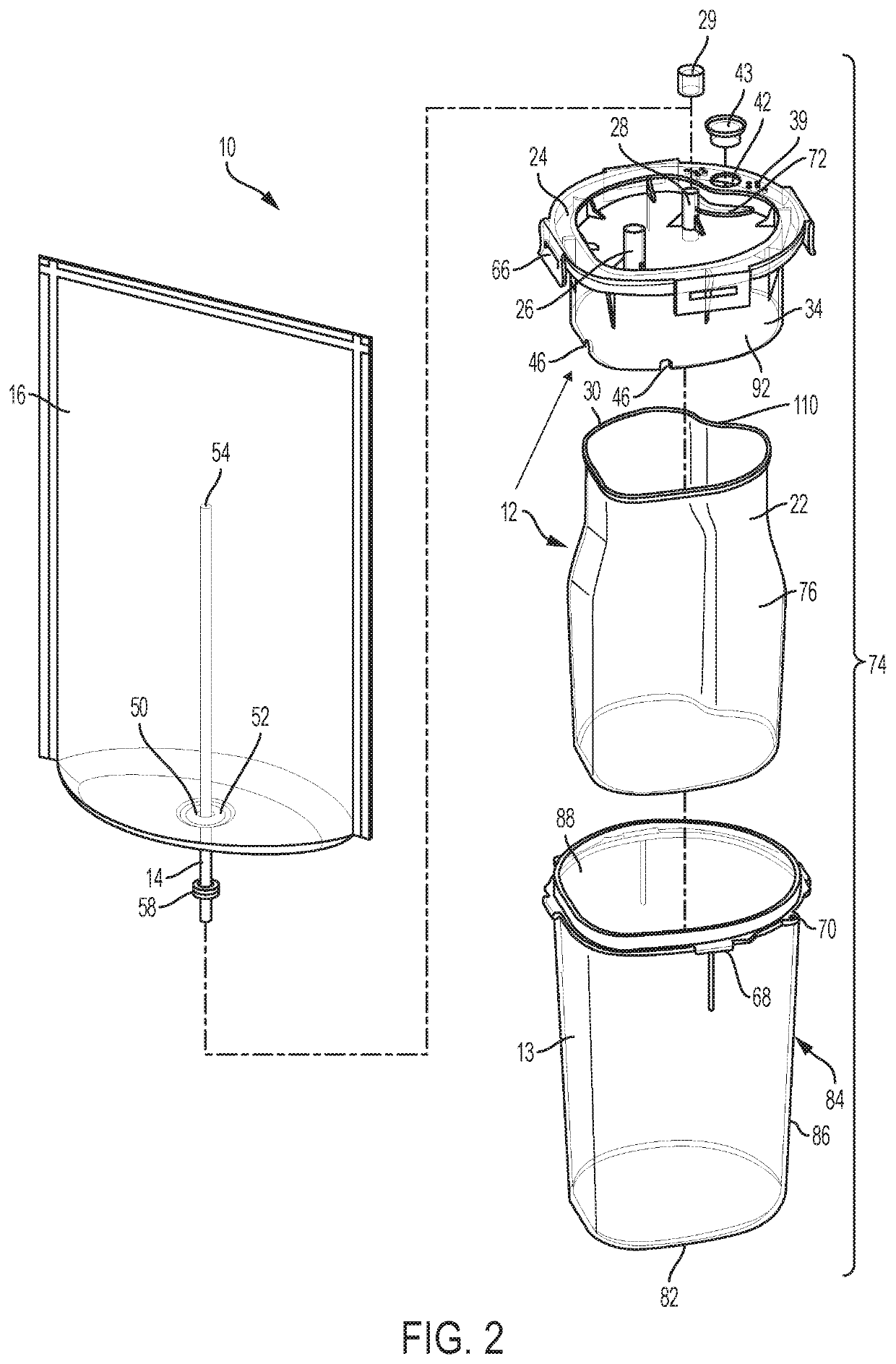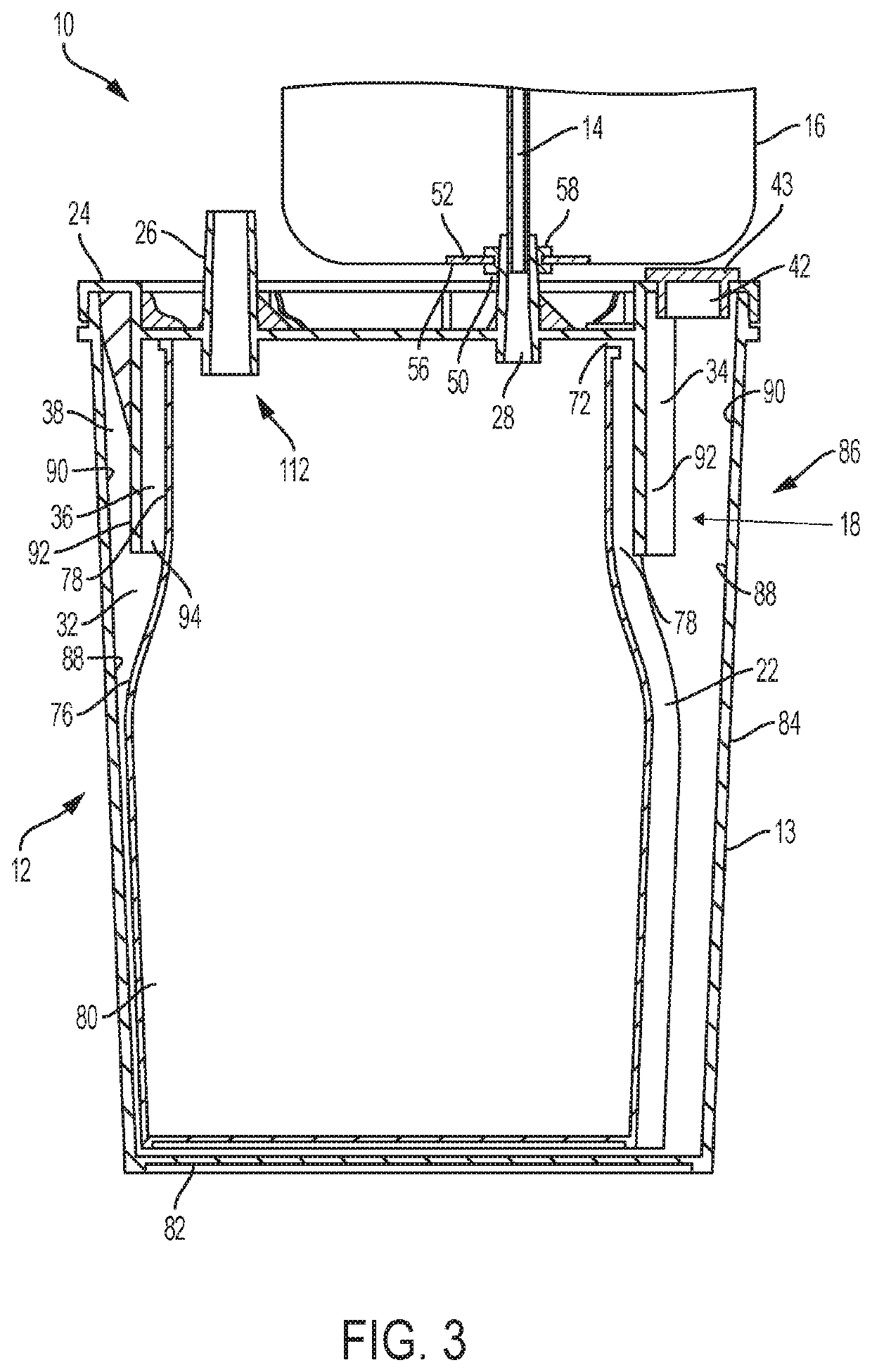However, fermentation blowoff and post-fermentation suck-back are troublesome aspects of the brewing process for many brewers, and there is a need for improved methods and equipment to address these problems.
Isolating the liquid in the fermenter from the
ambient air during fermentation is important, because
ambient air can contain microbes that may contaminate the fermented beverage and ruin the entire batch.
The fermentation process can cause blowoff, in which the foamy kraeusen that forms on the top of fermenting liquid is discharged from the fermenter by fermentation gases (such as
carbon dioxide) that are generated within the vessel during the fermentation process.
Blowoff can foul a standard
airlock and may plug it as well.
The blowoff likely contains fermentable sugars from the fermenting liquid, such as beer wort, and if the
airlock becomes fouled with the blowoff, there is increased potential for undesirable microbes to grow in the airlock and
gain a pathway to the fermenting liquid.
Such incidents may create a mess, and are potentially hazardous.
Eruption may also breach additional seals in the fermenter, and may provide additional pathways for undesirable microbes to contaminate the fermenting liquid.
However, the use of a blowoff bucket includes drawbacks of its own.
This is because the liquid in the blowoff bucket will be fouled with blowoff containing fermentable sugars.
Cleaning and sanitizing may be a problem for brewers who need to be away from their fermenter during fermentation, such as home brewers who travel for work.
Further, the blowoff tube and blowoff bucket may need to be cleaned more than once during a fermentation, as blowoff may occur over an extended period of time, such as for several days.
During cleaning, the fermenter may continue to blow off, making the task challenging and messy, and increasing
exposure of the fermenting liquid to undesirable microbes.
A
disadvantage of continuing with a blowoff bucket is that the liquid in the bucket may be stagnant for weeks, becoming unsanitary and attracting vectors for
contamination, such as fruit flies.
Changing to a standard airlock may address the problem of fouled water in the blowoff bucket, but this is yet another task for the brewer, and increases the risk of introducing unwanted microbes and / or
oxygen into the fermenter—either of which may adversely affect the
flavor of the finished fermented beverage.
Moreover, regardless of whether the brewer continues with a blowoff bucket or changes to a standard airlock in known systems, the fermenting liquid may be subject to suck-back problems when the fermenting liquid cools.
More significant cooling may be caused by the brewer performing a cold
crash, which includes decreasing the temperature of the fermenting liquid to cause the
yeast in the fermenting liquid to go dormant and settle out, thereby clearing the fermenting liquid.
This liquid can cause off-flavors, infect the beer with undesirable microbes, such as
bacteria or wild yeasts, or make the beer unsafe to drink.
Further, even if a known standard airlock is in use during cooling, liquid from the known airlock liquid may be drawn into the fermenter, along with a significant amount of air from ambient
atmosphere.
This liquid and / or air may include undesirable microbes and may contaminate the fermenting liquid.
Also, the introduction of air into finished fermented beverage such as beer may lead to oxidation and the formation of staling compounds that result in defects in
flavor.
For example, beer recipes that use a large quantity of
flavor and
aroma hops, such as IPAs, may be particularly susceptible to oxidation off-flavors and loss of flavor due to
exposure to
oxygen and / or microbes in air.
 Login to View More
Login to View More  Login to View More
Login to View More 


